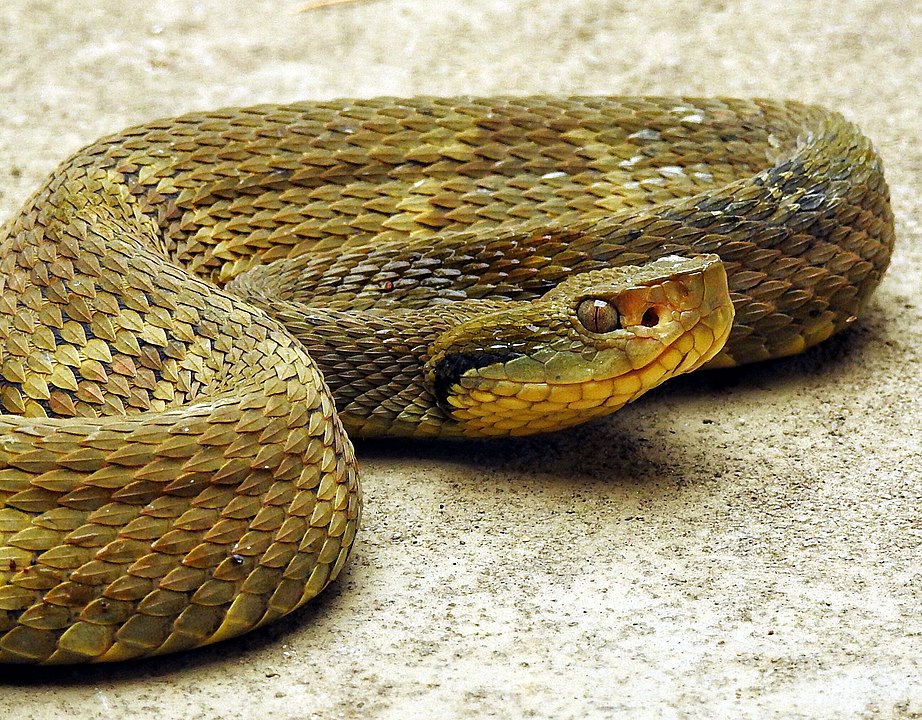ARTICLE AD
 Gila monster (Heloderma suspectum). (reptiles4all/Getty Images)
Gila monster (Heloderma suspectum). (reptiles4all/Getty Images)
The toxic bite of a Gila monster can kill a human, but a specific ingredient in the cocktail of the lizard's venom is the reason we have glucagon-like peptide (GLP-1) agonists like Ozempic and Wegovy.
At the end of the 20th century, endocrinologist Daniel Drucker was looking for a hormone similar enough to the human gut's GLP-1, which would have similar appetite-suppressing and blood sugar-regulating qualities, without being broken down by the human body so quickly.
 Gila monster, shot in studio. (Peter Finch/Getty Images)
Gila monster, shot in studio. (Peter Finch/Getty Images)Drucker had read about the work of endocrinologist John Eng, gastroenterologist Jean-Pierre Raufman and biochemist John Pisano, who had sequenced the proteins in Gila monster (Heloderma suspectum) venom and found two that looked like human GLP-1.
Drucker and his team from the University of Toronto acquired a Gila monster from the Utah Zoo's breeding program to dissect for further research. This work confirmed that the lizard species' unique genes produce a protein, Exendin-4, that fit the bill, mimicking GLP-1 while hanging round in the human body for far longer.
A synthetic version was created in the years after, but it took until 2005 for this GLP-1 agonist to become an FDA-approved treatment for type 2 diabetes. It's now also become a popular treatment for obesity, with further potential applications on the horizon.
 (Joel Saget/AFP/Getty Images)
(Joel Saget/AFP/Getty Images)This isn't the only time we've relied on the chemical arsenal of toxic animals. Life-saving drugs have emerged from the crucible of the natural world many times throughout history.
One of the top-selling drugs worldwide originates, ironically, from a snake's venom – but it's far from 'snake oil'. Lisinopril reduces the chemicals that constrict blood flow, which is why it's prescribed for high blood pressure, congestive heart failure, and to heart attack survivors.
But the maker of its natural form, the Brazilian viper (Bothrops jararaca), evolved to produce enzyme inhibitors that help venom spread smoothly through the doomed body of its prey.
 Brazilian viper. (Leandro Avelar/Wikipedia)
Brazilian viper. (Leandro Avelar/Wikipedia)Sea sponges are among the most ancient animals on this planet, so they've had a long time to cook up some interesting molecules. The Caribbean sponge (Tectitethya crypta) produces strange nucleosides which, in lieu of an immune system, protect it from the onslaught of foreign DNA introduced to its sessile body by predators and prey as it filter feeds.
These nucleosides provided the inspiration for the chemotherapy drug cytarabine, which is among the WHO's List of Essential Medicines for its use in treating non-Hodgkin's lymphoma and leukemia.
Animal toxins are proving useful in treating other cancers, too. In 2004, oncologist Jim Olson was dismayed to discover that even after a 14-hour surgery to remove a tumor from a teenage girl's brain, a thumb-sized piece of the cancer had been left behind.
He assembled a team to find a molecule that would help surgeons see cancers with the naked eye, and thanks to newly assembled DNA databases, they were able to find a suitable candidate in a matter of weeks.
Its unlikely origin? The venom of one of the most dangerous scorpions on Earth, the deathstalker (Leiurus quinquestriatus).
 Deathstalker scorpion. (Vlada Trailin/iNaturalist, CC BY-NC)
Deathstalker scorpion. (Vlada Trailin/iNaturalist, CC BY-NC)In isolation, the peptide chlorotoxin Cy5.5 had already been found to bind to ion channels on brain tumor cells, but not to normal human cells. The lab-made version, Tozuleristide, creates a kind of light-up 'paint' under near-infrared that has allowed researchers to see cancerous clusters as small as a few hundred cells in rodent studies.
From GLP-1 agonists to chemotherapy treatments, it's incredible that the toxic potions brewed up by the animal kingdom can be used to improve and save human lives. And a humbling reminder that the answers to our problems may be found in unexpected places, if we are willing to look further afield, and of course, if those species and their habitats still exist by the time we get there.

 1 day ago
23
1 day ago
23 

